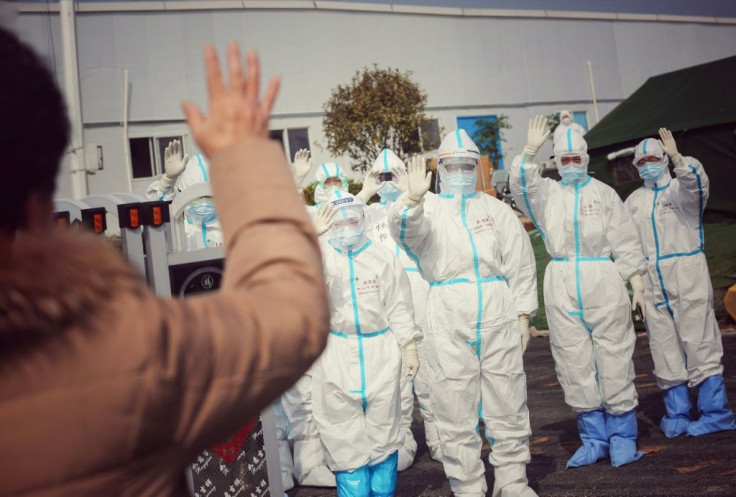Coronavirus Symptoms: The Patients Experience This Before the 'Tipping Point' Of Dying
KEY POINTS
- One in seven COVID-19 patients exhibit symptoms such as difficulty breathing
- 6% of them become critical
- The disease escalates very quickly to the most critical stage- 'the tipping point'
- While most patients experience cough which stays in the throat, it gets dangerous when it reaches the lungs
World Health Organization reported one in seven patients develop symptoms including difficulty breathing and other severe complications while 6% tend to get critical. They typically exhibit symptoms of respiratory failure and failure of other vital systems and often develop septic shock, Fortune mentioned.
What happens when COVID-19 escalates to the tipping point?
Experts warn that COVID-19 is outpacing and that the world is approaching a tipping point in the spread of the deadly disease. The coronavirus causes more than the cough when it stays in an infected person’s nose and throat. The danger starts when the infection passes down to the lungs.
“When you get a bad, overwhelming infection, everything starts to fall apart in a cascade,” the New York Post quoted David Morens from the National Institute of Allergy and Infectious Diseases. “You pass the tipping point where everything is going downhill and, at some point, you can’t get it back,” he added.
The escalation from mild to severe phases of illness can occur at a very quick pace. Such a ‘tipping point’ can occur earlier in older patients and those with underlying health conditions and have been reported to be at a higher risk of dying from COVID-9.
While the death rate of COVID-19 has been estimated to be around 3.4%, experts estimate that around 10-15% of cases experience severe symptoms and in another 15-20% case, the disease progresses to a critical stage. By far, there have been 3,500 deaths and 105,000 infected individuals worldwide, CNN reported.
The disease most likely spreads through contact with virus-laden droplets expelled from an infected individual’s sneeze, cough or breath.
While the infected usually begins in the nose, once it enters an infected person’s body, the coronavirus invades the epithelial cells lining the respiratory tract. When it is contained in the upper airway, it usually results in less severe disease.
But if it travels down the windpipe and treks downwards, it can lead to a more severe phase of the disease. And if your body’s white blood cells help heal the damaged tissue by acting as first-responders, you can clear up the infection within a couple of days. But, in more severe coronavirus infection, the body’s efforts to heal itself might not work and can result in the loss of protective mucus-producing cells.
“This is an important stage of the coronavirus outbreak,” the Guardian quoted Dr. Robin Thompson, Junior research fellow in mathematical epidemiology at the University of Oxford. “Fast isolation of even mild cases in affected areas is important for preventing substantial person-to-person transmission in Europe. It is critical that public health guidelines are followed,” he added.

© Copyright IBTimes 2024. All rights reserved.






















